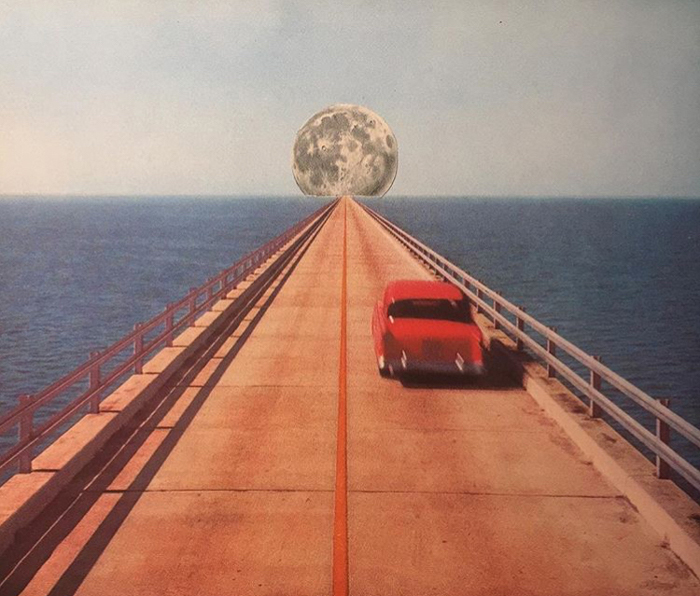
paper collage; 2018. Courtesy of the artist.
FROM KOLAJ #26
by Dillon Raborn
You are a practicing artist. As such, you manage notoriety and outreach by frequently posting work and otherwise interacting on Instagram. One day, a follower informs you that he saw your work featured as the cover of a monetized YouTube music video. This takes you by surprise: no one asked your permission beforehand to use the piece, and the band’s notoriety is providing you with no direct monetary subsidies or royalties. You are given credit as the artist of the cover image in the video description, complete with a link to your profile, but somehow this feels less remedial and more insulting.
This is the situation that arose for Robyn Redish, the artist behind the Stolen Painting Instagram account…
Redish’s feeling of infringed autonomy will be familiar to anyone who has ever staked part of their livelihood on producing art. It is perhaps this very feeling which first spawned our hazy pantheon of copyright laws. There is, however, a very real point of contention which wraps her situation into an ethical dead-end upon closer scrutiny: Redish is a collagist. Her medium’s appropriative practice predicates the upheaval of copyright doctrine.
This article appeared in Kolaj #26. To see the entire issue, SUBSCRIBE to Kolaj Magazine or Get a Copy of the Issue.
Robyn Redish is a self-taught analog collage artist who lives and works in Toronto. Her love of collage began as simple cut-and-paste projects when she was a kid. Her art has since been featured in galleries, sold internationally, and has been used as album covers. She uses a mixture of National Geographic, LIFE, and various vintage newspapers and magazines, collected from all over Toronto. See more of her work on Instagram @stolenpainting and on Etsy @StolenPainting.
